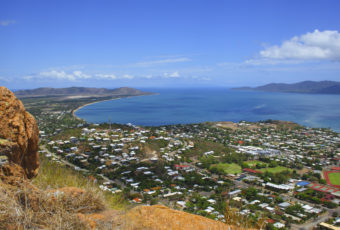Melbourne medical researchers say Indigenous groups more vulnerable to flu
Researchers at the University of Melbourne have discovered that some Indigenous groups will be more susceptible to the effects of the new strain of influenza (H7N9) currently found in China.

Research indicated that some Indigenous people such as in Alaska and Australia displayed limited immunity response to the effects of influenza.
Published in the Journal Proceedings of the National Academy of Sciences, senior author Associate Professor Katherine Kedzierska from the Department of Microbiology and Immunology said that some groups have a specific genetic make-up that prevents them from fighting off influenza.
“The findings suggested that there may be ethnic differences in the ability to mount an immune response to the H7N9 virus,” said Associate Professor Kedzierska.
“Due to genetic differences in a protein complex involved in cell-mediated immune responses, people may vary in their ability to mount this kind of immune response against the H7N9 influenza virus that emerged unexpectedly in February 2013.”
The new influenza virus called H7N9 which originated in birds and caused an outbreak in China in March 2013, infected more than 140 people. The flu strain resulted in a very high mortality rate of 30 per cent due to severe pneumonia and acute respiratory distress syndrome.
Professor Peter Doherty, AC, Laureate Professor and a lead author of the study from the University of Melbourne said the study shed light on what had happened during the catastrophic 1918-1919 influenza pandemic during which high adult mortalities (up to 100%) were reported in some isolated Alaskan villages.
“There are some populations that are at high risk from influenza disease,” Professor Doherty said.
“Similarly, as many as 10-20 per cent of Indigenous Australians died of influenza in 1919, compared to <1% mortality rate in non-Indigenous Australians. Hospitalization and morbidity rates were also higher for Indigenous Australians, ” he said.
“This was also the case during the recent 2009 H1N1 pandemic influenza, with 16 per cent of hospitalized Australians being Indigenous.”
“The genetic susceptibility of Indigenous Australian and Alaskans would have resulted from isolation of indigenous populations from the viruses like influenza. The indigenous populations were not subjected to evolutionary pressures caused by the viruses over the centuries.” said Associate Professor Kedzierska.
Department of Microbiology and Immunology
The Department of Microbiology and Immunology comprises more than 120 academic staff, including 15 full professors, 80 graduate students and around 22 research groups that are actively involved in microbiology and immunology research and teaching.
The department prides itself on excellence in teaching offering state-of-the-art training in microbiology and immunology led by teaching specialists and teaching-research academics. The department promotes research-led teaching in infection and immunity and provides superb training facilities for undergraduate and graduate students.
*

































Ask A Question
Ask us about your program of interest, or if you have a question about our services.
CONTACT US TODAY